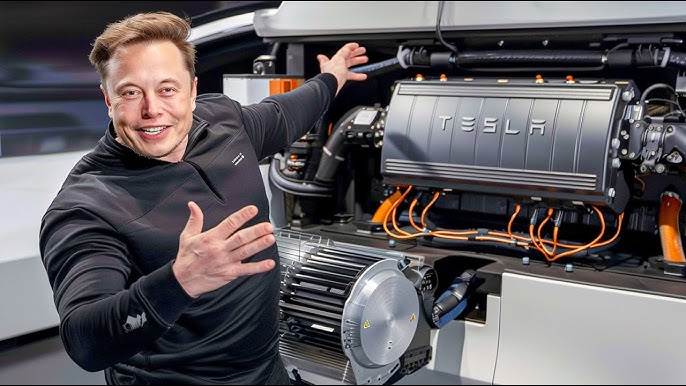
In a groundbreaking announcement that has sent shockwaves through the automotive industry, Elon Musk unveiled Tesla’s newest innovation: the Model H, the company’s first hydrogen-powered car. Known for his bold vision and relentless pursuit of innovation, Musk’s introduction of the Model H marks a surprising pivot in Tesla’s strategy, which has traditionally championed battery-electric vehicles (BEVs).
The Model H represents Tesla’s foray into hydrogen fuel cell technology, a field often considered a competitor to battery-electric systems. Unlike traditional combustion engines, hydrogen fuel cells produce electricity by combining hydrogen and oxygen, emitting only water vapor as a byproduct. This makes the Model H not only a zero-emission vehicle but also a potential game-changer in the quest for sustainable transportation.

According to Musk, the Model H is designed to tackle specific challenges faced by BEVs, such as extended range and rapid refueling. The hydrogen-powered sedan boasts a range of over 1,000 kilometers on a single tank and can be refueled in less than five minutes, addressing two of the most significant concerns for electric vehicle owners.
- Smart Integration: Equipped with Tesla’s cutting-edge Autopilot and AI-powered energy management system for optimal performance.
- Hydrogen Fuel Cell Technology: Converts hydrogen into electricity, providing clean, efficient energy.
- Exceptional Range: Over 1,000 kilometers, surpassing most BEVs on the market.
- Rapid Refueling: Refuel in under five minutes, rivaling the convenience of gasoline vehicles.
- Sleek Design: The Model H maintains Tesla’s signature aerodynamic design, blending style with efficiency.
Elon Musk’s embrace of hydrogen technology comes as a surprise to many, given his past skepticism of the “hydrogen economy.” However, Musk emphasized that Tesla’s mission has always been to accelerate the world’s transition to sustainable energy. The Model H, he argued, fills a critical gap for industries and regions where hydrogen may be a more viable solution than batteries, such as long-haul transportation and remote areas with limited charging infrastructure.
“The Model H is not about replacing BEVs—it’s about complementing them,” Musk stated during the unveiling. “Hydrogen has unique advantages, and Tesla aims to unlock its full potential.”
While the Model H presents exciting possibilities, hydrogen infrastructure remains a significant hurdle. Refueling stations are sparse compared to electric charging networks, particularly in regions outside of Europe and Asia. However, Musk revealed plans for Tesla to partner with governments and private companies to expand hydrogen infrastructure, ensuring the success of the Model H and future hydrogen-powered vehicles.
The launch of the Model H signals Tesla’s intention to diversify its clean energy solutions, potentially reshaping the landscape of the automotive industry. By entering the hydrogen market, Tesla is poised to compete with existing players like Toyota and Hyundai, who have pioneered hydrogen-powered cars such as the Mirai and Nexo.
Moreover, the Model H could stimulate further investment in hydrogen technology, paving the way for broader adoption across various sectors, including aviation, shipping, and heavy industry.
With the unveiling of the Model H, Elon Musk and Tesla have once again demonstrated their ability to disrupt and innovate. By embracing hydrogen fuel cell technology, Tesla is expanding its vision of a sustainable future, offering a diverse array of solutions to meet the world’s energy challenges. The Model H is not just a car—it’s a bold statement that the future of transportation is multifaceted and dynamic.
Stay tuned as Tesla continues to push the boundaries of what’s possible in clean energy and sustainable mobility.





